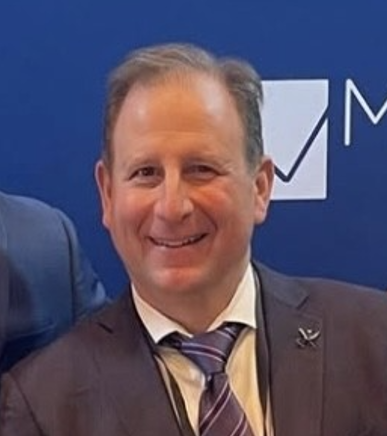Launching a staffing agency takes more than industry know how and hustle, it requires a clear roadmap. That roadmap is your staffing agency business plan, and it’s more than just a formal document, it’s the strategy that guides your decisions, attracts investors, and sets your agency up for long term growth.
In this guide, we’ll break down exactly how to create a strong business plan tailored to the staffing industry, whether you’re starting from scratch or refining an existing one.
1. Executive Summary: Your Business at a Glance
The executive summary is your elevator pitch in writing. It should offer a clear, concise snapshot of your staffing business and why it will succeed. Think of it as the cover letter to your business plan, it may be read first, but should often be written last. Highlight what services your firm will offer (such as temporary staffing, permanent placements, or contract staffing), who your target market is, and what sets you apart. Include a brief financial overview and clearly state whether you’re seeking funding. The goal is to intrigue readers enough to dive deeper into the plan.
2. Company Description: Define Your Identity
This section tells the story behind your business. Outline your company’s legal structure (LLC, corporation, etc.), history (if applicable), and ownership team. Explain your mission, vision, and core values. Describe your location, the market(s) you plan to serve, and any niche you specialize in, such as healthcare staffing or executive recruiting. If you’re entering the market with a competitive edge, like cutting-edge technology or deep industry experience, be sure to highlight it here.
3. Market Analysis: Know Your Battlefield
Before launching a staffing business, it’s critical to understand the landscape. Start by describing the current state of the staffing industry, growth trends, emerging sectors, and labor market demands. Identify your target clients ( ex: small businesses, hospitals, tech companies), and define their pain points. Use market research and statistics to back up your analysis. Also include a competitive analysis: who are your main competitors, what are their strengths, and how will you differentiate your service? Conclude with a SWOT analysis to give a balanced look at your business’s strengths, weaknesses, opportunities, and threats.
4. Services Offered: What You Bring to the Table
Here, go into detail about the types of staffing services you plan to provide. Will you focus on temporary staffing, direct placements, contract work, or all three? Will you specialize in a certain industry like IT, manufacturing, or healthcare? Break down your recruitment process from candidate sourcing and screening to placement and follow-up. Mention any value added services, such as payroll management, training programs, or background checks. Emphasize what makes your services efficient, scalable, or unique.
5. Marketing and Sales Strategy: How You’ll Win Clients
This section outlines how you plan to reach potential clients and candidates. Describe your branding strategy, how you want your business to be perceived and how you’ll build awareness. Include digital marketing tactics such as SEO, pay-per-click ads, content marketing, and social media presence. Talk about your sales process: will you rely on a dedicated sales team, inbound leads, or referral partnerships? Detail how you’ll build relationships, nurture leads, and close deals. If you have a CRM system or automation tools in mind, this is the place to mention them.
6. Operations Plan: Running the Daily Show
Here, you’ll map out the nuts and bolts of how your business will operate. Outline the daily workflow, from receiving client staffing requests to placing qualified candidates. Include information on your physical or virtual office setup, tools you’ll use (like an applicant tracking system or scheduling software), and how you’ll manage client and candidate data. Compliance is key in staffing so note how you’ll handle contracts, labor laws, insurance, and any necessary licensing or certifications. This section should show that your back office is as efficient as your front end.
7. Organizational Structure: Building Your Internal Team
Even staffing firms need to staff themselves. Describe your organizational chart and key leadership roles like recruiters, account managers, and business development specialists. If you’re starting solo, outline the roles you plan to fill as you grow. Share details on hiring strategies for your own employees and how you’ll train and retain top talent. Consider culture, incentives, and performance metrics. After all, the strength of your internal team will directly impact your ability to recruit for clients.
8. Financial Plan: Mapping the Money
Investors and lenders will scrutinize this section, and even if you’re bootstrapping, it’s essential for your own clarity. Begin with startup costs, office space, technology, insurance, initial hiring, marketing, and so on. Then outline your revenue model: how will you charge (hourly markup, placement fee, retainer)? Include projections for your income statement, balance sheet, and cash flow for at least three years. Detail assumptions, like client volume, bill rates, and payment cycles. If you’re seeking funding, specify how much you need and what it will be used for. Also include a break even analysis to show when the business will become profitable.
9. Appendix: Supporting Documents
This final section is optional, but incredibly useful. Include any documents that support your plan, such as resumes of your leadership team, sample contracts or service agreements, market research data, and business licenses. If you’ve secured letters of intent from prospective clients or vendors, add them here. These materials build credibility and give readers a fuller picture of your readiness.
Final Thoughts
Writing a business plan for your staffing agency isn’t just about securing investors, it’s your blueprint for success. A solid plan helps you clarify your mission, understand your market, design efficient operations, and prepare for growth. Whether you’re launching a specialized boutique firm or aiming to scale nationwide, a thoughtful and thorough business plan is your first real hire.
Ready to Build? Resources to Help
You don’t have to do it all alone. Here are helpful tools and templates:
Ready to start your funding journey? Partner with Madison Resources today [apply here]
Explore our website to find more staffing insights. Madison Resources is the premier payroll funding and back office support partner to the staffing industry. Grow with confidence.


